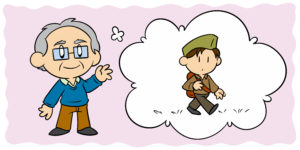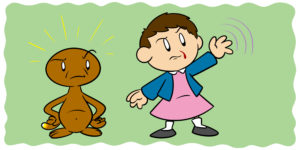Non-fiction might seem more straight-forward than fiction, but it actually involves a host of traditions and superstitions all its own. The focus of many of these is the non-fiction introduction: the reader’s first real experience of the work and one which often dictates if they’ll go any further.
So how should non-fiction authors approach this seemingly all-important part of their book? Should they even bother, or is the non-fiction introduction a false idol that they can safely ignore? Who should write a non-fiction introduction and, once that’s decided, what should they say in it? In this article I’ll be answering all of these questions, providing a one-stop guide for any questions, concerns, or brainwaves about the non-fiction introduction. The truth is, however, many of you won’t need to read beyond the next paragraph.
Do you need a non-fiction introduction?
No.
Okay, you might need to read a little further.
Introductions seem synonymous with non-fiction books, and there are a couple of reasons for that. The first is that for many people, most of the non-fiction books they’ll read will be at school. These books need to constantly explain ‘how, what, and why’ because they can’t assume the reader is interested. The idea that non-fiction has to account for itself in a way that fiction doesn’t is seeded early on, but it simply isn’t true for the majority of non-fiction authors.
Fiction rarely feels the need to validate itself in this way. The novels most likely to include introductions are classic literature. This is usually because a) the only thing that can persuade you to buy this copy is some unique content, for example in the form of a noteworthy introduction, and b) once again there is the need to justify the existence of something which is understood as more than entertainment.
Another reason non-fiction introductions are so common is that they’re self-perpetuating. Pick up a random non-fiction book and it’s likely that there’ll be a short introduction. It’s difficult to step out from the crowd and do things differently, but if every other non-fiction author jumped off a cliff that wouldn’t mean it helped their book.
So for any writers who think their work stands on its own, and are struggling with how to introduce their book because it doesn’t need an introduction, you’re free! There is no mandate in favor of introductions, and it is entirely possible your work will be better without one.
For those who wish to persist, the first thing to understand about the introduction is what exactly it is.
What is an introduction?
An introduction is a short passage prior to a work which justifies its existence. This justification might take the form of a short history of the book, a clarification of why the topic matters, or an explanation as to why the reader should read it. If the introduction is written by someone other than the writer it may contain a recommendation, but it will still cover why the book’s existence is a good thing.
There’s nothing wrong with this justification, in fact introductions take this form because of the other side of what they are: the final advertisement.
On a bookshelf, the cover and title first draw the reader’s attention, the blurb gains their interest, and the introduction explains to them why the book deserves their time. Online, the process is much the same, but with some keywords thrown in to guide the casual searcher to the work.
A non-fiction introduction is your last chance to grab readers. Get it right or lose sales.Click To TweetSome may skim the first chapter, but most know by the end of the introduction whether they want to read the book or not. You get a few pages for the reader to make this decision, and this is why you should decide whether an introduction helps your work or if you’d be better off without one. If your potential reader is going to read a few pages, do you want them to encounter the book’s true content outright, or do you want the chance to address them directly?
When should you write a non-fiction introduction?
The first few pages of your book are what will sway many readers’ decision on whether or not to read on. You should write an introduction when you think it will be the very best thing for them to encounter in this scenario.
The book A History of the World in 100 Objects is a good case study of a non-fiction book which really didn’t need an introduction. The topic of the book, potted histories of one hundred historical objects forming a wider picture of human existence, is easily gleaned from the title, blurb, and a quick flick through. Alongside a preface and a brief passage before each of the delineated time periods, the book’s twelve page introduction does very little in its favor.
The book includes all sorts of objects, carefully designed and then either admired and preserved or used, broken and thrown away. They range from a cooking pot to a golden galleon, from a Stone Age tool to a credit card, and all of them come from that collection of the British Museum.
– Neil MacGregor, A History of the World in 100 Objects
The reader should experience the book as a treasure trove of fascinating items, but instead they’re confronted by a short essay. It’s enough to drive off an otherwise enthusiastic reader.
In comparison is Christopher Westhorp’s introduction to the collected The Wipers Times. A compendium of humorous articles written by and for soldiers in the trenches of WWI, the content needs an introduction to offer readers vital context. The articles are frequently satirical and come from a grim period of war, and so it makes sense to begin with an introduction which clarifies the humor of the work.
Horror is deflected and ultimately defeated with jokes and indomitable cheerfulness. A century later, along with appropriate remembrance of the sacrifices made by those who took part in the war, it should be a source of national pride that such a gallant generation of men never lost their appetite for laughter.
– Christopher Westhorp, The Wipers Times: The Famous First World War Trench Newspaper
Who should write your non-fiction introduction?
If you can find someone respected in your field who can write an engaging non-fiction introduction then they’re ideal. If not, there’s nothing wrong with doing it yourself. As I mentioned above, the introduction is really a justification for your book, and there’s no-one more qualified to identify the value of your work than you.
Christopher Westhorp is a respected writer, editor, and researcher with a specific interest in military history. This, alongside his previous employment by Arms and Armour Press, makes him an ideal personality to introduce The Wipers Times.
Really, though, unless you know someone whose recommendation would pull in potential readers on its own you’ll be just as successful writing your own introduction. At the end of the day it’s not who writes your introduction, it’s what’s in it.
How to write a non-fiction introduction
The first rule, and an important one, is to keep it short. Introductions of more than three pages (two and half really, so readers can see it’s going to end soon) are really just pages a reader will skip past while worrying slightly that they’re missing something important.
If your introduction does only one thing, it must be to answer the implicit question of the reader: ‘Why should I read this?’ You can answer this by expounding the value of the book’s contents, or by explicitly stating what it will do for them.
Your introduction should answer an unspoken question: 'Why should I read this?'Click To TweetThe book Alphabetical explores the history of letters: how they were formed and used, and fascinating anecdotes from their long existence (such as the origin of the phrase ‘mind your ps and qs’ – purportedly an instruction for printers who worked on mirror-image documents.)
The topic may not be of immediate interest to some, but Michael Rosen’s introduction uses a casual dissection of his own name’s history to show how fascinating the subject can be. He goes on to explain that the reader can expect not just dry facts, but an emotional connection.
The alphabet is not simply a phenomenon or structure, it’s something we each come upon, learn and use in our own idiosyncratic ways. Our personal histories and feelings are wrapped up in what the letters and their means of transmission mean to each of us. The biography of the alphabet is intertwined with one’s autobiography of the alphabet.
– Michael Rosen, Alphabetical: How Every Letter Tells a Story
Your introduction is really a statement of your thesis, and should detail what you plan to do, and what this will do for the reader. Will they laugh, cry, gasp, or be enraged? For this reason, any non-fiction introduction should also be of a similar style to the book’s content; your goal is to preview what the reader has coming.
You can also use the opportunity to share some backstory about yourself or your choice of topic, but only if this is interesting. Like the inclusion of an introduction, your reasoning is not required by law. If it will entertain a reader, and make them care about the book, then go ahead and include it. Be wary of including this kind of content if it is only of interest to those who have already read the book. It’s a tall order to get someone to care why you wrote a book if they don’t know whether it’s any good or not.
Next, include anything else you think will convince your target demographic to read on. The introduction to Michael Palin’s The Python Years almost immediately mentions the shows he was working on during this time period, acknowledging his work on Monty Python’s Flying Circus before employing a quote from legendary comedy actor, writer, and fellow Python John Cleese. Palin knows that his time on Monty Python is what will motivate many readers to buy the book and so he foregrounds it in his introduction.
Punk musician Viv Albertine uses her introduction to address the fact that many of those interested in her might find a collection of anecdotes a particularly un-punk thing to write. Simultaneously, and subtly, she tells the reader the experience they can expect if they read on.
Anyone who writes an autobiography is either a twat or broke. I’m a bit of both. Once I got going, I did make myself laugh a couple of times and learnt a few things, as patterns emerged that I hadn’t noticed before. Hopefully you’ll have a bit of a laugh and learn a few things, too.
– Viv Albertine, Clothes, Clothes, Clothes. Music, Music, Music. Boys, Boys, Boys.
She then goes to the trouble of providing page references for any references to sex, drugs, and punk rock for ‘those in a hurry’. If yours is a topic with a specific demographic then taking a page or so to write something they will identify as inclusive is well worth your time – and almost the opposite of what A History of the World in 100 Objects does.
Targeting a specific demographic? Writing an inclusive introduction is worth your time.Click To TweetThe final thing you should do in your introduction is to explicitly invite the reader’s participation. An instruction to ‘enjoy’, ‘read on’, or ‘discover’ cues them to continue, and once again confirms that the book they are holding is for them.
A non-fiction conclusion on non-fiction introductions
An introduction isn’t space to be filled. If you’d prefer a reader to make their decision based on your first chapter rather than your introduction, that’s all the sign you should need to let them do so.
An introduction is your chance to present the core idea of your work to a reader. To tell them what it’s about, how you’re going to try and make them feel, and that they should read on. It’s a section in which you can unapologetically sell your work to those who are genuinely interested in it, and if you set out with this in mind then you won’t go wrong.
For more on non-fiction writing, check out Writing creative non-fiction – how to stay safe (and legal) or Give your memoir a little TLC (and increase your readership).
Have you ever encountered a really brilliant non-fiction introduction, or do you skip them and go straight for chapter one? Let me know in the comments.






10 thoughts on “Your Non-Fiction Introduction: Everything You Need To Know”
This article was extremely useful, and made me feel certain that I need a short introduction for my book, as the contents cannot be understood from the first chapter alone. And by accident, I already wrote an introduction in a format that was recommended above, which was also good to know and made me feel more confident about it. Thanks for the good advice.
My pleasure, Gene; really glad we could help.
Well written and helpful. Although that may sound like a big “duh” considering that’s the whole point of this site, not everyone meets and exceeds expectations as you have. Many thanks!
Thanks for the kind words, Liz. I’m glad it was useful.
I am about to embark on yet again trying to tame the ‘write an introduction’ beast. I like the idea of page references for ‘those in a hurry’. I can see that working for my non fiction book about a challenging and sometimes very dark subject. Invite the reader to the moments that they relate to and want answers for.
I may just have gotten past the being stuck point, and am beginning to see a starting point. A beast no longer.
thank you Robert
My pleasure, Johnny. Good luck taming the beast.
– Rob
Thank you so very much, Rob! I wasn’t sure what the difference was between, say, a long introduction which some writers have and the first chapter in non-fiction. I am writing a book on Dreams and the Guidance They Give and I can see why organizing a book is somewhat different than organizing a workshop where everyone has already signed up!
I generally skim Introductions and sometimes skip them altogether. Joke’s on me. Now, last minute, I realized I got too carried away with the language and cadence of my Introduction.
I’m writing about a complex topic (the intersection of bipolar depression, addiction, trauma, and the need for integrative treatment in our mental health system), and I need to focus on the main message. Your article is really helpful.
Thanks for the clarity!
Although I understood what an introduction does from a thesis or academic point of view, I wanted to get an idea if it was different in a commercial structure. Your clear and precise descriptions on if it is even needed, how many pages, and how to go about it is priceless!
Thank you for this succinct article. Most helpful!